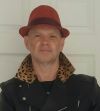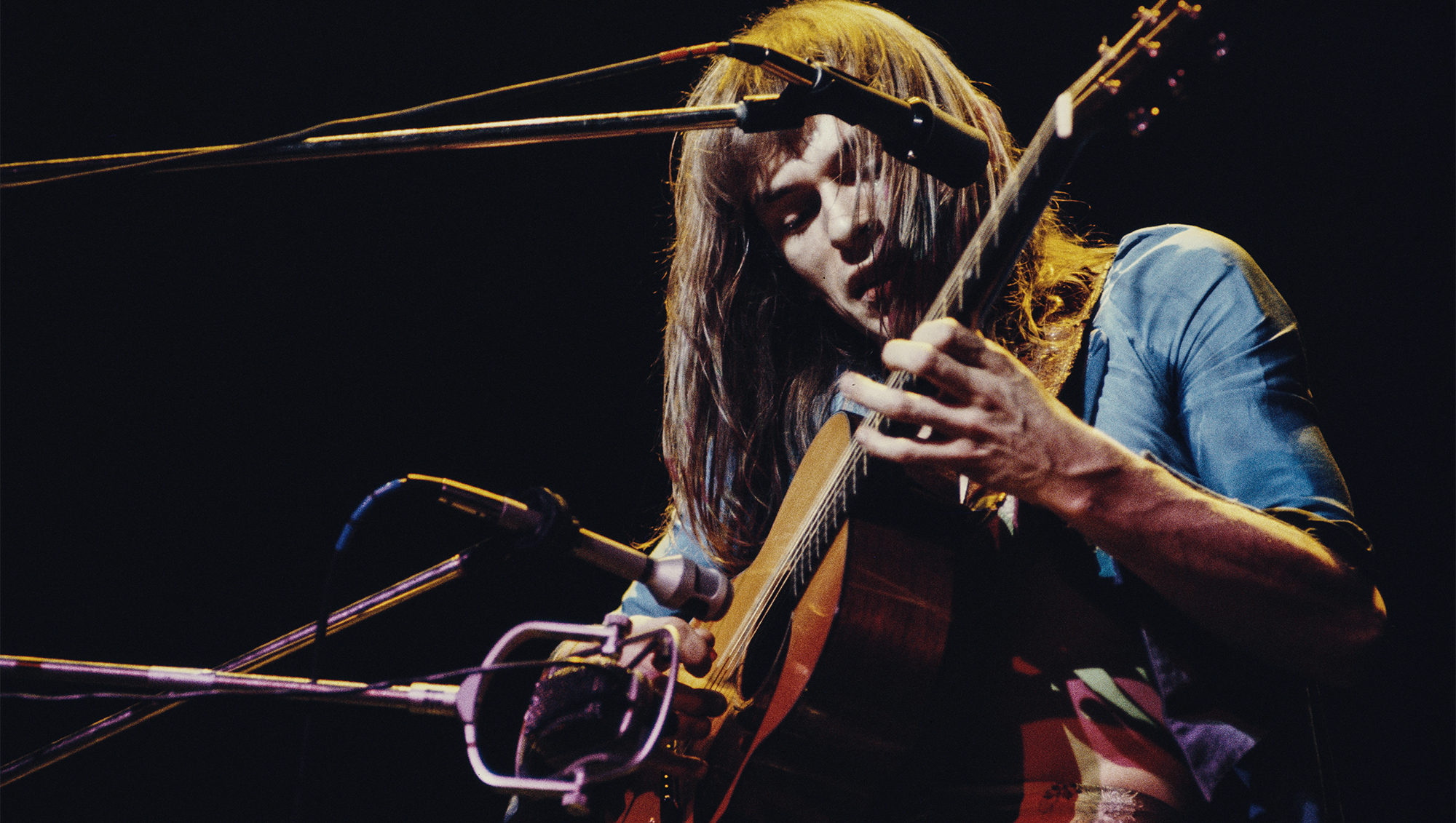“People used to show up in the parking lot and ask the crew to tell me that they had guitars to sell... One guy was facing trial and needed money for his lawyer. That's how I got my goldtop Les Paul”: Lenny Kravitz on recording, and unlikely gear finds
Since his first release, Lenny Kravitz has been the master of impeccable riffs, perfect guitar tone, and genre-melding music. As he releases his fiery new album, he takes GP inside his creative process and incredible collection of vintage guitars
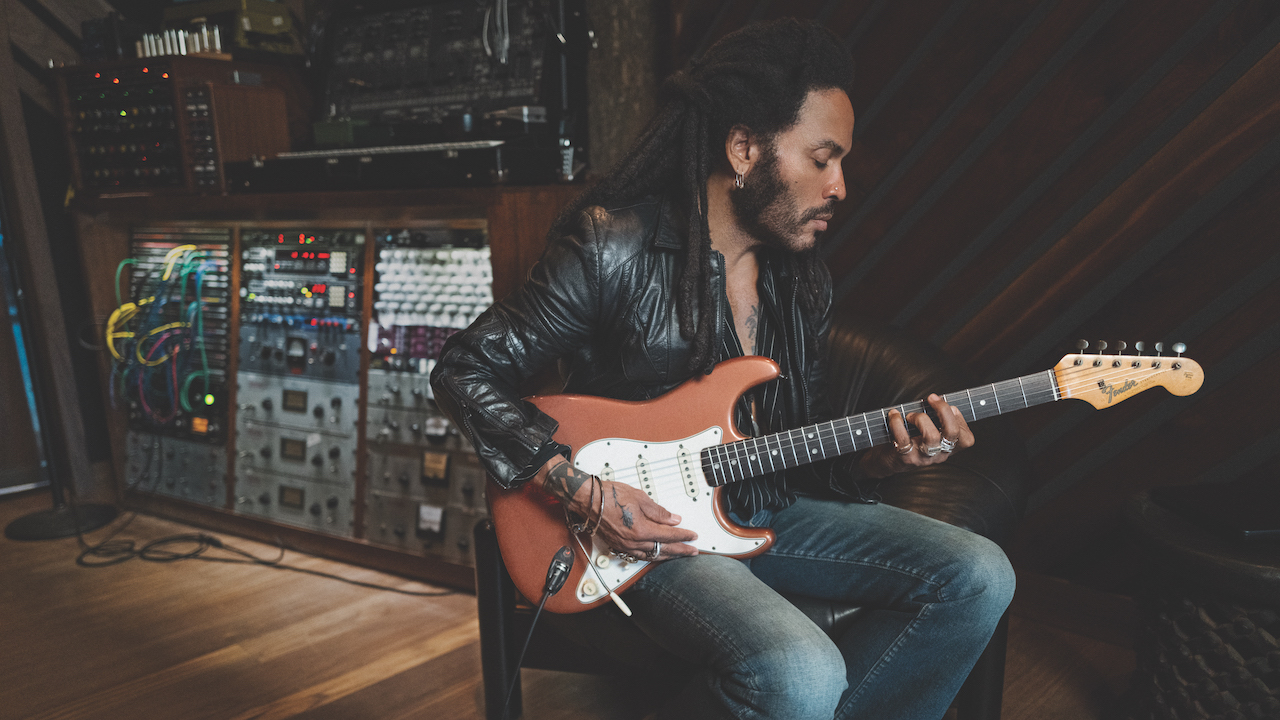
Lenny Kravitz has been curating his own unique blend of rock, soul, funk and R&B since the appearance of his debut album, Let Love Rule, way back in 1989.
Unafraid to mix and match genres, he has an impeccable sense of taste and an encyclopedic knowledge of the music that came before him. Since that first album, it has served as the glue that holds everything together, informing and influencing his own creations without ever slavishly resorting to mimicry.
Given all the above, it comes as no surprise that Kravitz is a supreme tonehound, relentlessly chasing down vintage gear in his pursuit of the ultimate sonic experience.
“I’ve been doing this for so long now, even from the first record,” he confirms. “I was already on this kick, you know?” But it’s not simply nostalgia for the past that fuels his gear lust. “I just prefer the sound,” he says. “I was A/B-ing all kinds of gear from the very start, and the vintage gear always won. It has much more warmth, depth and dimension.”
Kravitz maintains his patented approach on Blue Electric Light, his latest album and first full-length release since 2018’s Raise Vibration. The record finds him teaming up once again with Craig Ross, his longtime band member and guitar partner. “Craig is a guitarist who deserves his due,” Kravitz says. “He’s been with me for over 30 years, and I rank him with anybody. What’s so great about him is all the styles that he can play. He’s limitless.”
The album was initially completed well over 12 months ago, but Kravitz held it back. “There were a lot of things going on and a lot of planning in putting the tour together to promote the album, so we were just waiting for the right time, logistically. For me, there was no rush.”
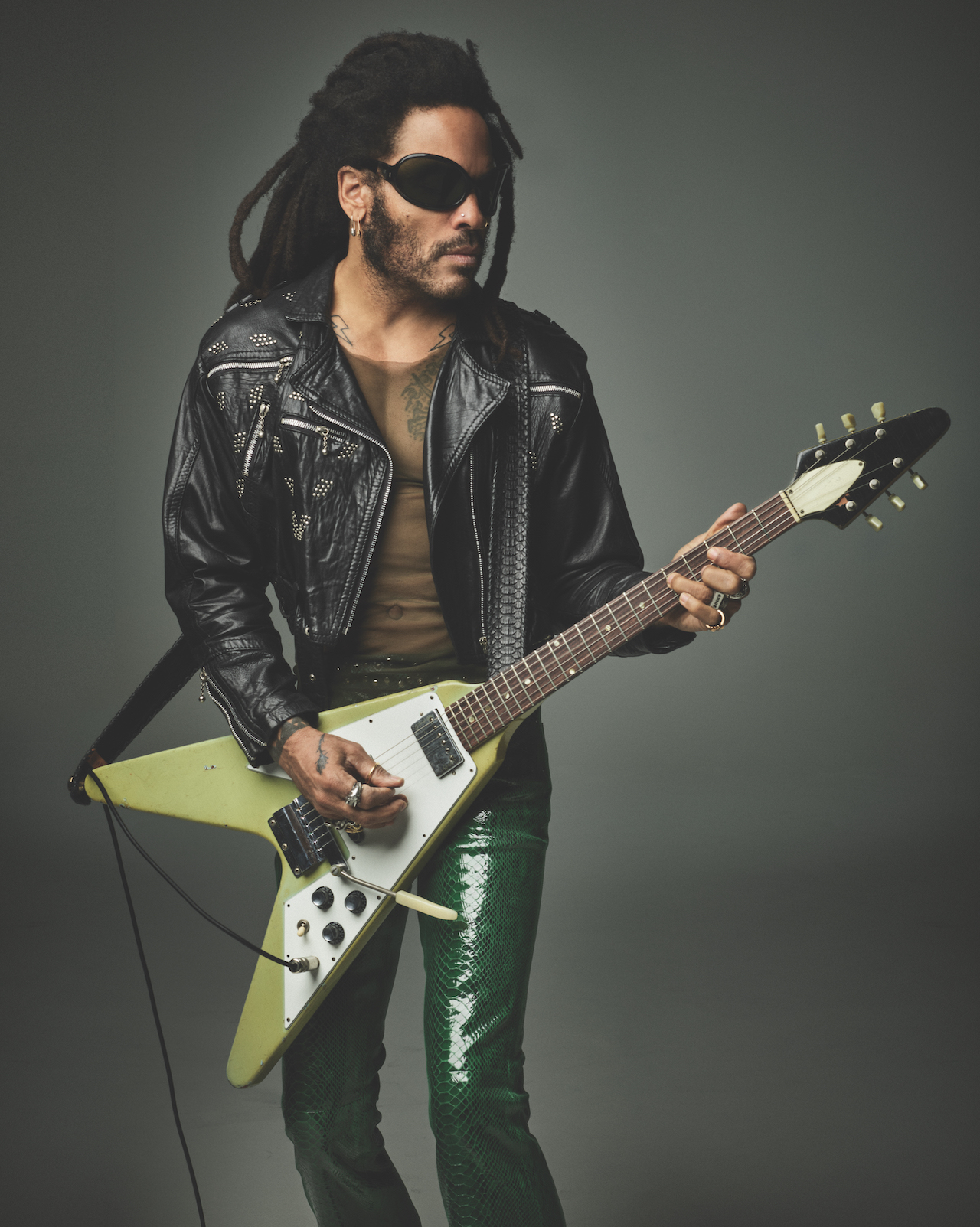
Having lived with the album for a year now, were you tempted to tweak things, or did you adhere to the “leave well alone” philosophy?
All the latest guitar news, interviews, lessons, reviews, deals and more, direct to your inbox!
“I actually did tweak it. I had the time to make sure that everything was perfect. I’ve mixed this album so many times, you wouldn’t believe it [laughs]. I can say with total confidence that there isn’t one thing out of place for me.
“Sometimes you can listen back to an album and think maybe the snare could have been a little louder, or the EQ on the bass could have been different, you know? You can just nitpick little things. But I’m really pleased with the way it turned out. It feels like a new wave of energy and a new beginning, and that’s always a wonderful way to feel after completing a new record. It inspires you, and it gives you energy to move forward.”
There are great guitar tones all over the album. What was your go-to gear?
“I have an arsenal of gear in the studio. Everything that is in the studio – from the console to the outboard gear to the microphones to the guitars, basses, amplifiers, and drums – has been handpicked by me over the years. They’ve really gone through heavy testing, because when you’re in the studio, everything is under a microscope.
“Sometimes, things that you think sound good onstage or in a room, once you put them under that microscope, they just don’t cut it – they don’t have the purity of tone that I’m looking for.
“So these are things that have been in my studio for many years. My go-to studio amps are a tweed [Fender] Deluxe and a blackface Deluxe that was modded by Howard Dumble, which is one of my favorite amps in the world. I also used a Gibson Skylark.
“I tend to stick with smaller amps; they sound better and more contained. They’re just really pure. I don’t use any processing, really, other than my outboard EQs or the console. I’m not using a bunch of pedals or anything. For a solo where I might want a bit of fuzz or something, I’ll use an effect, but never for the rhythm guitars, where I want a really pure tone.”
What guitars do you find yourself constantly returning to for recording?
“My number one guitar in the studio is a conversion ’53 goldtop with a different bridge and tailpiece, and PAFs that were added later. It is the most pure-sounding guitar that I have. I used it on Are You Gonna Go My Way in 1993 and every album since then.
“I have a ’59 flametop Les Paul – it’s actually more of a plain-top – that’s on the record. There’s also a black three-pickup Les Paul Custom from ’59 on the album. Those three are my main guitars. There are also some Strats on the album, plus I used a Gibson J-200, a Dove, and an Everly Brothers acoustic as well.”
There is definitely a value in using vintage gear, but if there is a secret, it is knowing how to use it
How does the recording process work with you and Craig?
“It depends. For instance, if it’s a track where I want us to play together from the start of the song, I’ll teach him how it goes. Then I’ll get on the drums, and we’ll go for a live take – boom! [laughs]
“Normally we get it down on the first two takes. Then I’ll be sitting with his rhythm and my drum track, at which point I find my opposing guitar part to his rhythm. Once that’s down, I put the bass and keyboards on myself, and then finally the vocals, of course. Then I’ll start building the track up from there.
“If it’s a song where Craig comes in later, I’ll have him play along to the drums on an acoustic in a booth, so that the sound doesn’t leak, and then I’ll put my parts down first. There were some old Linn and 808 drum machines on this album, so for those the drum machine would kick in right from the start with the guitar parts.”
One of your unique sonic signatures is the great organic warmth that you have on your records, which isn’t something you find so much in music these days. Do you think your use of vintage gear is the secret to that, or is there more to it?
“Well, yes, there is definitely a value in using vintage gear, but if there is a secret, it is knowing how to use it. I have tube and solid-state vintage gear, and everything from the microphone to the mic preamp to the compressors to the outside EQ – all of it matters. It can be the reverb plate or echo chamber, or whatever it is. It’s a long chain of events that brings out that warm organic chain. And that’s on every instrument.”
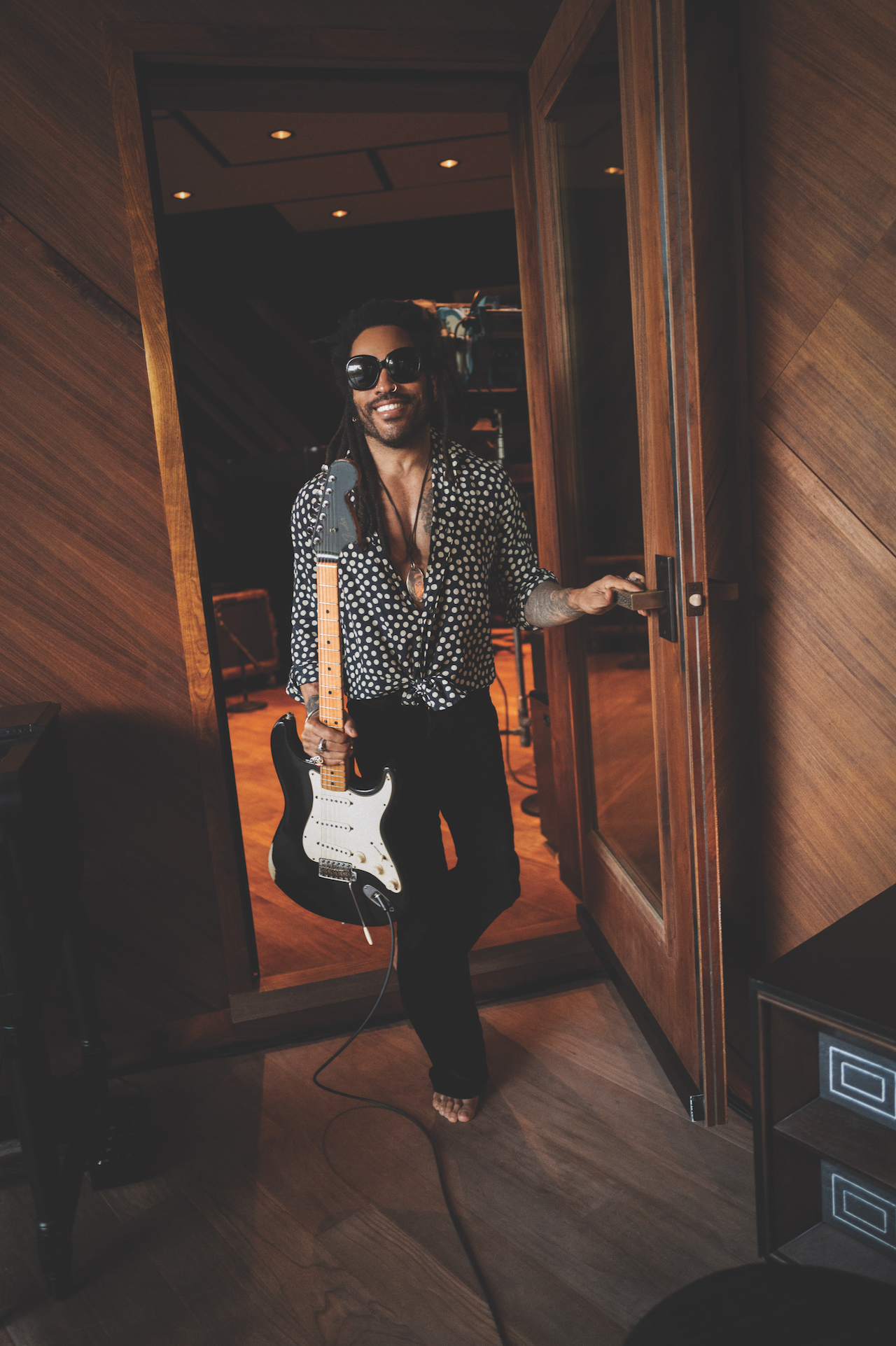
Within your productions, there are often layers of keyboards and strings and so on, but the guitar always seems to be at the heart of everything. Is the guitar your primary means of expression, besides your voice, of course?
“I find it all to be even between voice, guitar, keyboards, drums and bass – those five elements. They’re all equally important to me and as powerful in their means of expression. Having said that, the most common comment that I get from people is that they identify most with my voice and guitar, so maybe there is something to that. I definitely feel that it’s almost like painting with the guitar when I put the parts down.
“I think the rhythm is the most important element of a guitar part – maintaining a powerful groove. The way that the parts get layered is something that I’m very precise and exacting about. That’s the key to painting the picture with the guitar and working with different styles of guitar playing, whether it be funk, rock, reggae, country, or jazz. You need to have all the different genres of playing down so that you can paint freely.”
Let’s discuss a few of the tracks in detail. Love Is My Religion has a great epic rock feel, with a harmonized solo that has more than a hint of southern rock about it. Where did that song come from?
“The songs come from wherever they come from. I’m just an antenna, you know? They’re out there floating around [laughs]. I wanted something that sounded like a big stadium anthem. I wanted to have something that would have people chanting those words, man. We all have to come together – I’ve been saying this throughout my whole career, from Let Love Rule.
“This is what is important. Craig and I wrote and played the harmony solo together; that was the one thing that we’ve never done before on an album. It’s just bass and drums under that part – I wanted to let it stand out, so I didn’t have any rhythm guitar under that section. It’s a very sweet, positive sound when you get those harmonies right.”
Blue Electric Light is another song with an epic feel.
“I love that track. We recorded it toward the end of the album; it was the second-to-last track that I wrote. I have to give credit to Craig here, as he suggested that it should be the title of the album.
“There’s a very saturated guitar tone on here, with a lot of space. I played the solos on this one. I didn’t really work anything out; I just started playing. I wanted it to be simple, effective and melodic – no showing off or anything, just really hitting the right notes and playing with as much feeling as I could.”
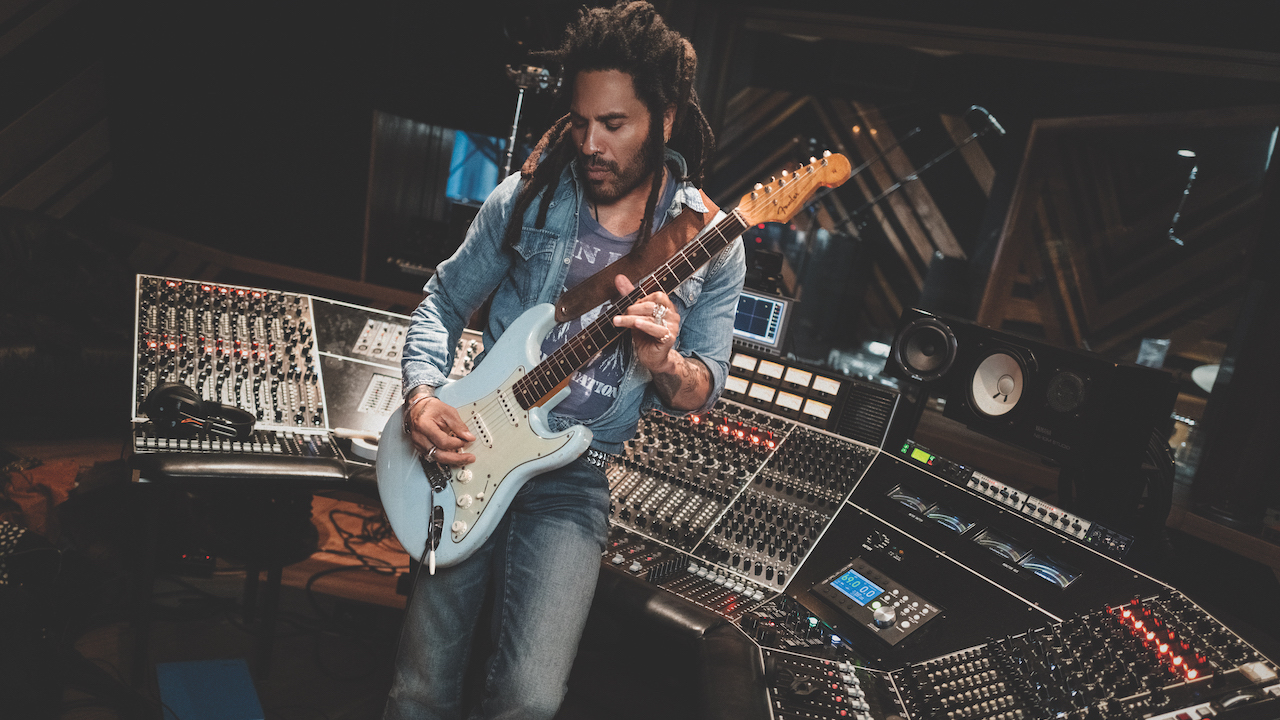
There’s a strong sense of groove all over the album, particularly on Bundle of Joy, which features some lead breaks that are a little redolent of Stevie Ray Vaughan’s playing.
“I played rhythm on this, and Craig played those licks. There is a beautiful vibe here. I agree that it has that fluid approach that Stevie particularly brought to David Bowie’s Let’s Dance album. Actually, that Bowie album was a big record for me. When Craig was putting down his part, I told him to ignore what I’d put on the demo and to just go for his own feel and approach, and he did an amazing job.”
Paralyzed features a talk box, which you don’t hear too often, as it’s an effect that is so distinctive that it can only really be used sparingly.
“Absolutely. I hadn’t pulled the talk box out since the Let Love Rule album, where I used it on a song called Fear. I wanted that vibe, rather than playing some stock licks, and after using it at the front of the song, I just decided to do the solo as well.
“It gives a real nasty tone, and it’s so expressive. It’s another color. Back in the day, whether it’s Joe Perry, Johnny “Guitar” Watson or, especially, Peter Frampton, it’s so distinctive. Whenever I think of talk-box guitar, I think of Frampton. It’s a nice, distinct moment on the album. I’m looking forward to doing it live.”
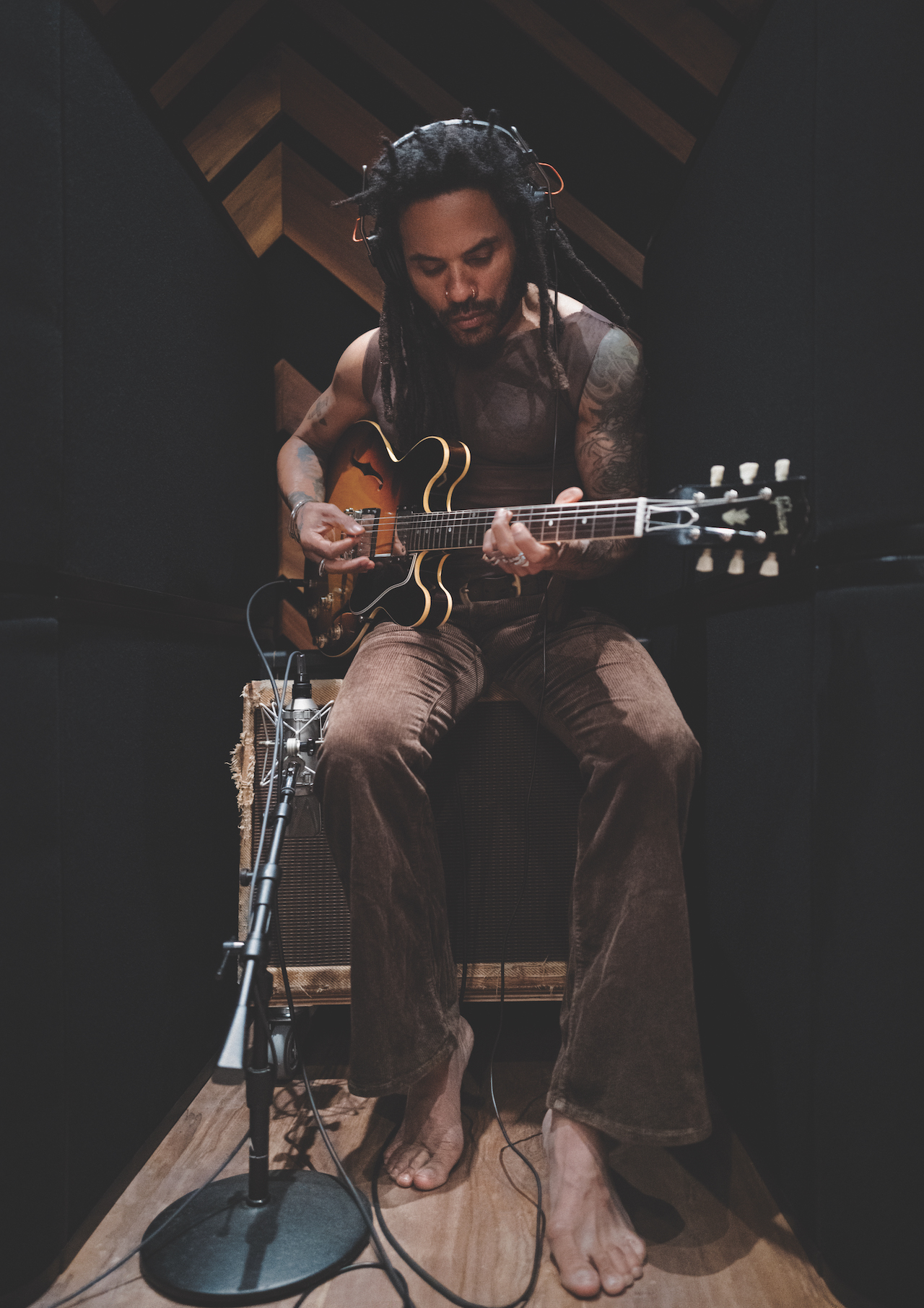
On a very upbeat album, Just Another Fine Day takes that optimism up another notch. There’s a great use of space in the solo that’s reminiscent of David Gilmour.
“That’s Craig there on that one. The song started out as a vibe, with me on bass and keyboards, drums, and strings. A friend who listened to it remarked that it was like Sly Stone meets Pink Floyd, which I think really nails it down. This is one of my absolute favorite tracks on the record. Craig played his ass off. Whenever I listen back, I sing the solos. They’re just so melodic, and of course, that’s what Gilmour was so good at doing.
“It’s very organic when Craig and I decide who plays a solo or whatever. It almost suggests itself. We can come back to a track after a year or so and forget who played the solo, as we’re so close in the way we envision the music.”
I think the quietness of nature is very much central to who I am and what I do
Is the luxury of having a pro studio at your disposal a double-edged sword? On the one hand you have the luxury of being able to record whenever you want, but on the other hand, there are no deadlines to force the decision-making process.
“Well, it is all about how I am able to work. I don’t have to deal with record labels anymore; I record for my own label [Roxie, named for his late mother, actress Roxie Roker], and then it’s distributed by a company, in this case BMG. I turn in records when I turn them in – when I feel that I’m ready and the music is ready, and when I’m ready to go on tour.
“Having the studio at home is a way of life for me, and it’s beautiful. I wake up and my day begins with music. I’m out in the Bahamas, in the middle of nature, near the ocean, and my life is really just about being in nature and being in this environment. I can go into the studio and pick up from wherever I was, freely, and everything just takes the time that it takes. I really like working that way.”
You have homes in various countries around the world. Do you take inspiration from where you are and the different cultures that you are experiencing?
“I suppose a little bit, but mostly it’s just a direct connection with the atmosphere. Ultimately, it really doesn’t matter where I am, I guess. I have a studio in Paris and one at my home in the Bahamas, which is where I do the lion’s share of my work. I don’t think it’s so much the culture of where I am as much as the lifestyle that I lead that inspires me. I think the quietness of nature is very much central to who I am and what I do.”
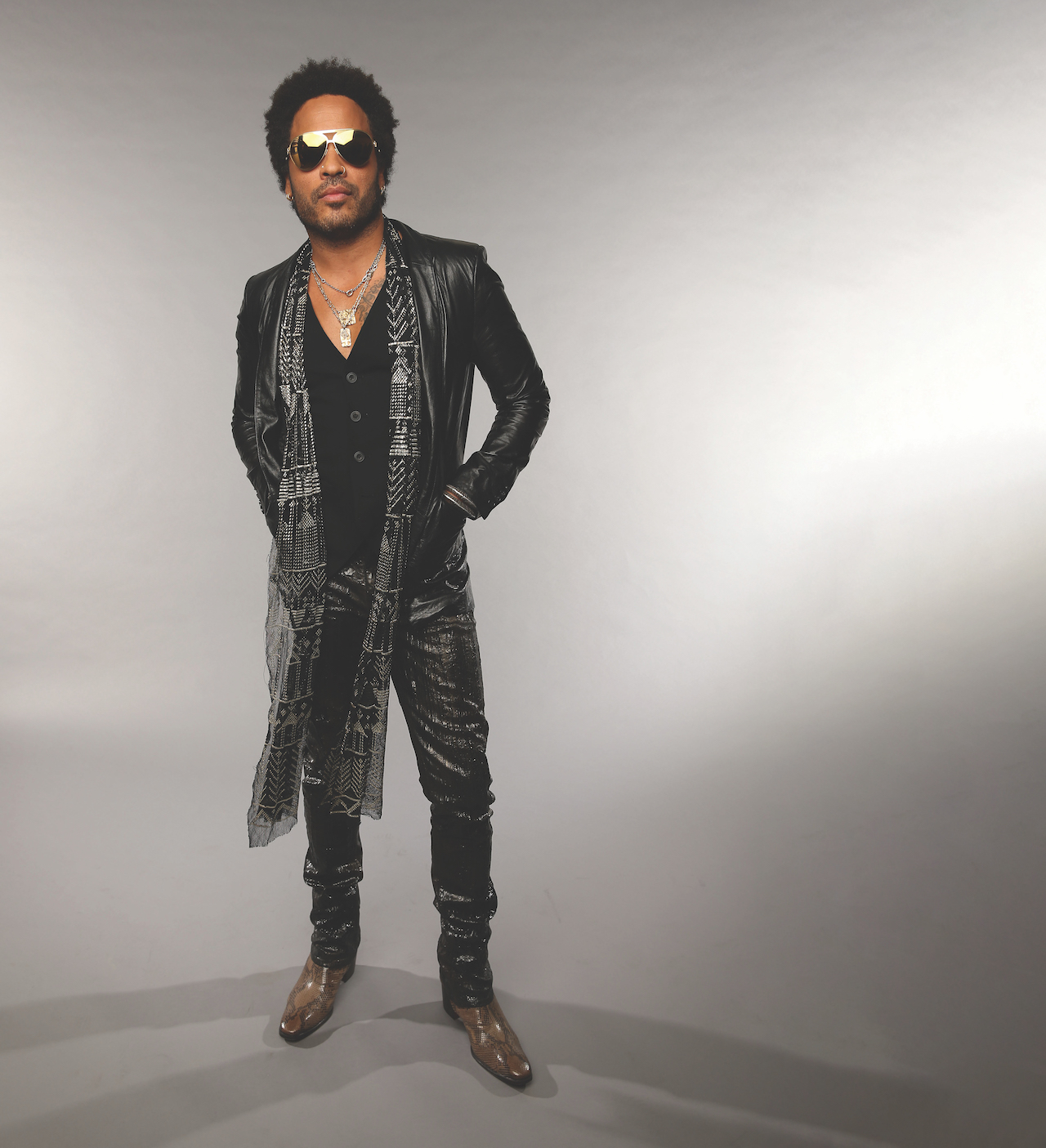
Going way back, what were you listening to that fired up the idea to play guitar and make music?
“Firstly, Motown music, so you’re talking about all those great studio musicians who played on those fantastic records. Then Jimi Hendrix, of course. Jimmy Page, the Beatles – George and John – jazz musicians, like Kenny Burrell, George Benson, and Wes Montgomery. Kiss – Paul and Ace – were big influences, as was Al McKay from Earth, Wind & Fire.
“I listened to everything, man. All the great studio musicians – the Wrecking Crew, the guys at Muscle Shoals. I just listened to music and I loved it. That’s why my music is all over the place [laughs].”
Most people start on something fairly crappy. What was your very first guitar?
“The first guitar I got was not the one that I wanted [laughs]. I was very grateful for it, though. It was a Yamaha acoustic with a built-in pickup. It had a volume and a tone knob. My dad got it for me from Manny’s [in New York City]. I wanted a Strat. I had a Fender catalog, and I used to just dream about the guitars in there. I had a friend across the street called Alex, and he had a beautiful Strat and a Fender amp. But we lived in a little apartment and my dad thought it might be too loud.
“Anyway, I was able to plug this acoustic into an amp, but I couldn’t get any distortion and I couldn’t get any of the funky tones that I wanted. We moved to L.A when I was 11, and then I got my second guitar, which was a Fender Jazzmaster, from the original Guitar Center music store, the small one on the corner of Sunset. A couple of years later, I traded that in for my first Les Paul, which was a Les Paul Deluxe [in] a natural finish, with the smaller pickups.”
When the decent money started to come in, what were your first few extravagant guitar purchases?
“I got the advance for my record deal, and I had to go and complete my album at that point, so I bought an Epiphone Sorrento, a Telecaster, and a Fender bass.
“When Let Love Rule came out, I opened for Tom Petty, and he and Mike Campbell taught me so much about vintage guitars. I’m talking about ’89, when you could still find good things at really great prices. I’d go with Tom and Mike to stores in each city, and at that stage I couldn’t afford the things that they could, but I felt that they were educating me.
“On the Mama Said and Are You Gonna Go My Way tours, I really started to pick up a lot of great guitars. People used to show up in the parking lot, find somebody from the crew and ask them to tell me that they had guitars to sell. I’d find some amazing things. There was one guy who was facing trial, and he needed money for his lawyer. That was how I got that goldtop that is still my number one Les Paul. He had a ’57 Tele and an early ’50s Strat as well. I still have those guitars in my collection now.”
When you’re not recording or working on new material, do you work on anything in your own playing, or are there areas you’d like to explore further?
“My God, there are so many things that I’d like to work on – it’s endless. Jazz is definitely something I’d like to explore. I grew up knowing Kenny Burrell as a friend of the family. I wish I could study with him now, but he’s not really playing anymore. I always say I want to work on this or that, but whenever I pick up the instrument, I tend to get inspired. Then, next thing I know, I’m back in the studio working on a song idea.
“I have this fantasy of taking a year and going to my farm in Brazil and just disappearing – doing nothing but studying guitar and trying not to write. [laughs] That’s the hard part for me when I play: trying to not start exploring song ideas. I can be working on a technique when suddenly I’ll think, ‘Oh shit, I can hear a song!’ [laughs]”
What’s coming up next for you, once you’ve toured this new album?
“I’ve already begun work on the next album. It’s going to be a very stripped-down record – pretty much a guitar, bass, and drum album. Very much a straight-ahead rock record. After doing this record and working with synthesizers and drum machines and a bit more production, I can see that my reaction will now be to go the other way, which will be very, very basic.”
6 of the best: Lenny Kravitz's most prized vintage axes
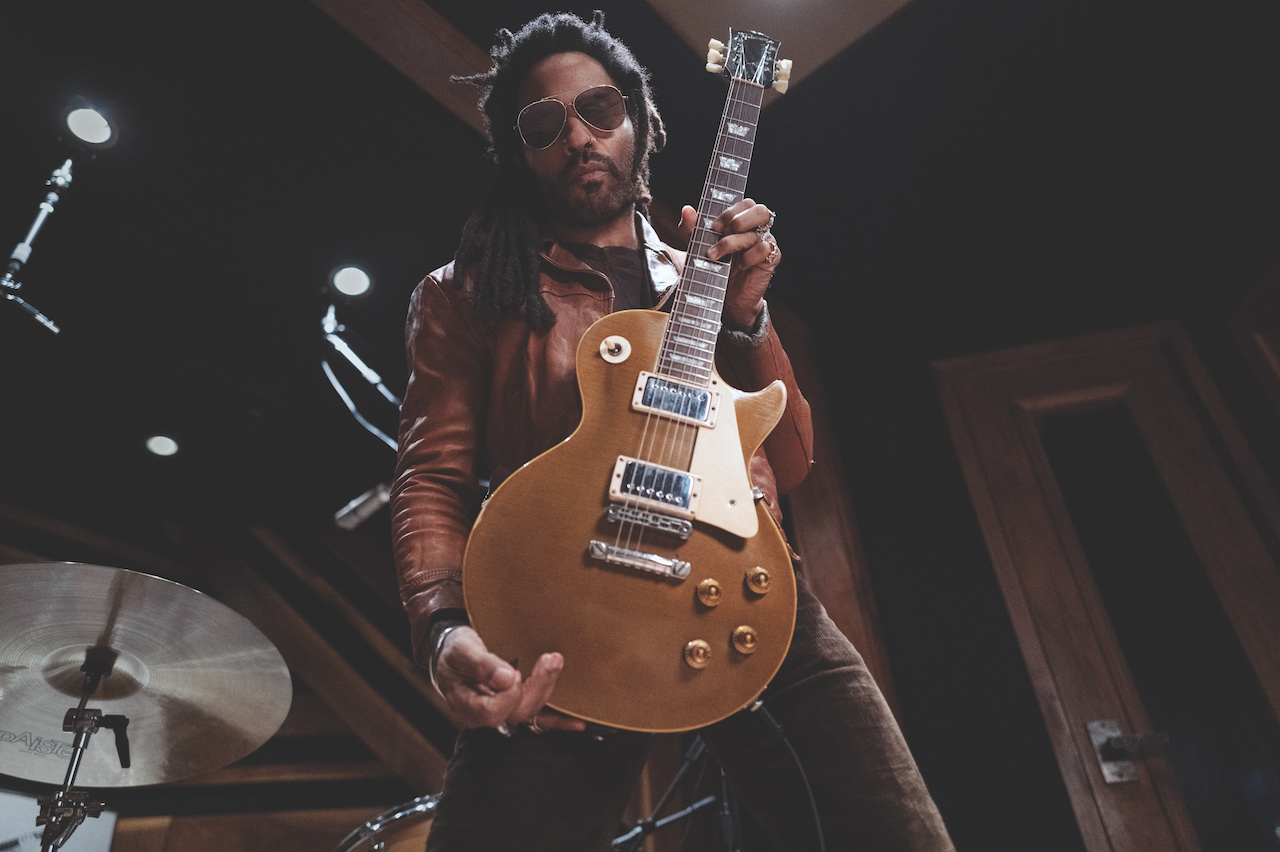
1. Gibson Les Paul Goldtop Conversion (1953)
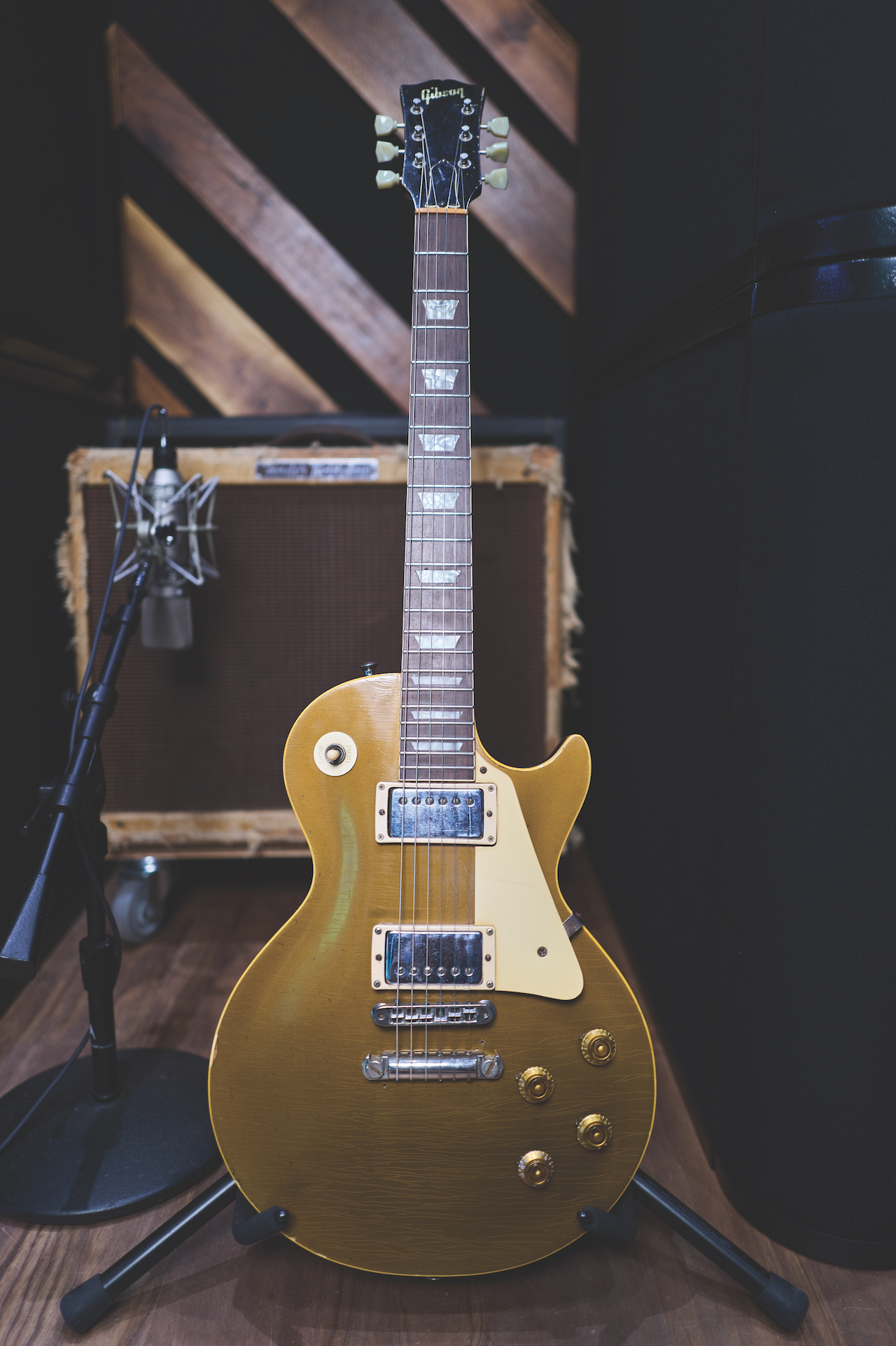
Kravitz's number one guitar, this ’53 Les Paul goldtop conversion was purchased circa 1992 while he was on tour with Tom Petty and the Heartbreakers. “I got word that this guy was in the parking lot selling guitars,” Kravitz recalls. “And he, unfortunately, was facing jail time and needed to get a lawyer. I went out to his car, and I probably bought five guitars that day, including this one.
“It became my number one studio Les Paul from that time to now. It’s got a great Les Paul bite, and the distortion is really smooth and even, from the high end to the mids to the low. It’s on the slightly cleaner side – the pickups are not hot, but they’re just perfect. This has been on every album since I got it, starting with Are You Gonna Go My Way.”
2. Gibson Les Paul Custom (1959)
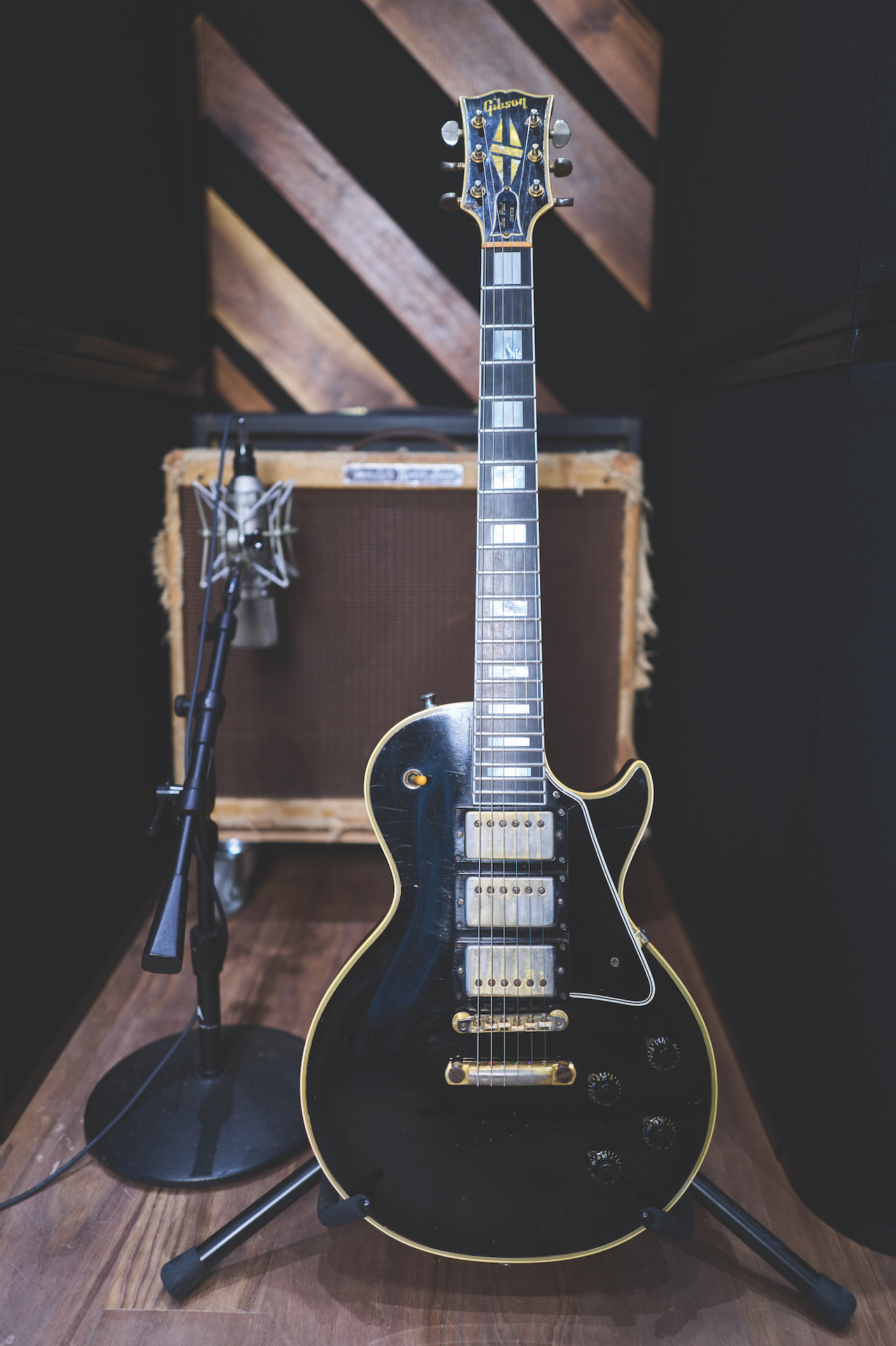
“I got this one back around the time of Are You Gonna Go My Way, or maybe Circus. It’s really fantastic.”
With so many great examples to choose from, how does Kravitz decide which Les Paul to use for a song? “I have an idea before I cut the track of what
I’m looking for in terms of the character and the right tone.
“I’ve used this guitar on many recordings throughout the years, including on this album, but I can’t remember every song. I just know it’s been on pretty much all the records since I got it, either for rhythm, lead, or both.”
3. Les Paul Standard “Plain-Top” (1959)
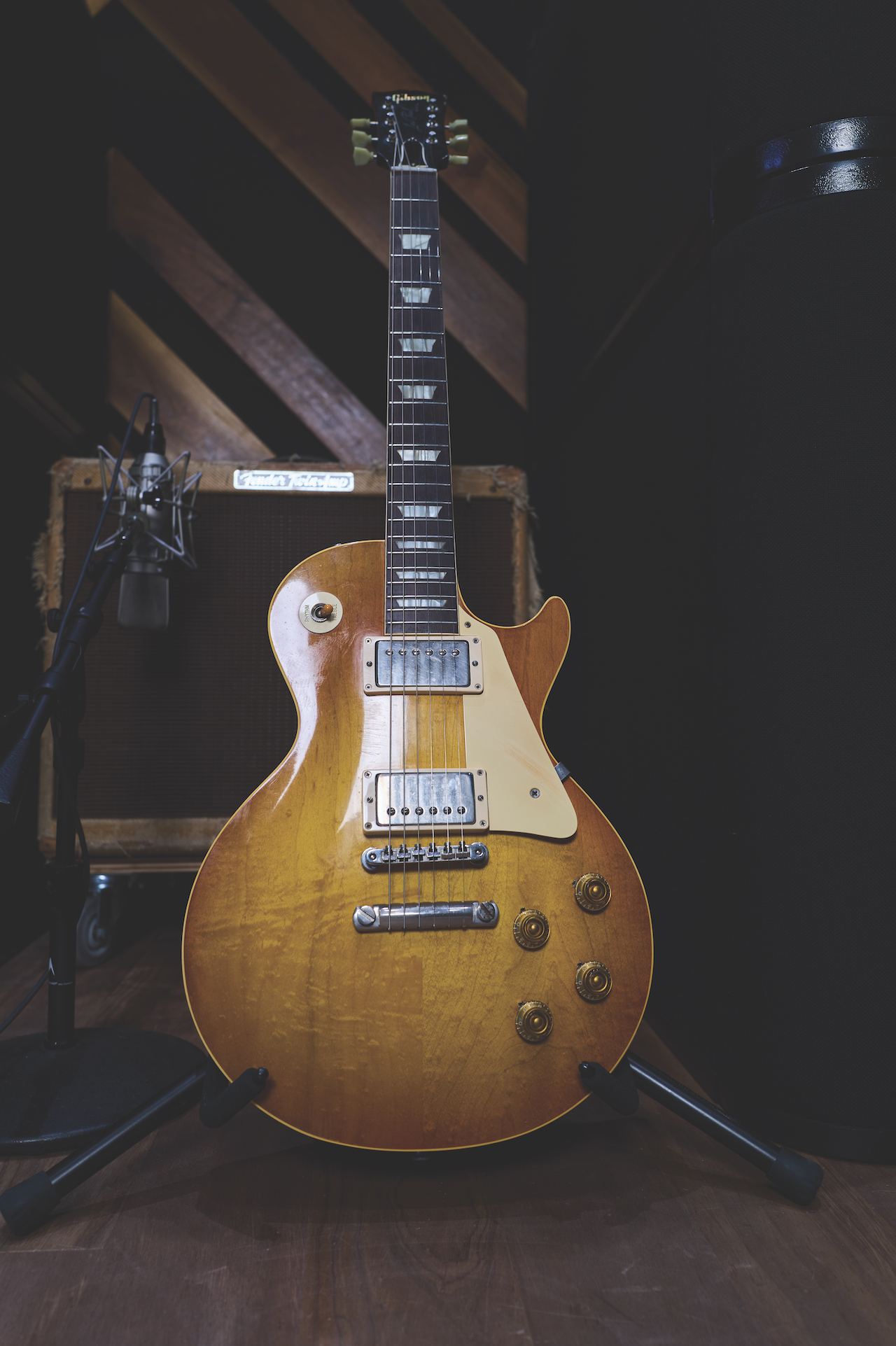
“I’m fine with flames, but I like plain-tops a lot!” Kravitz says. “There’s just something about them when they have the right grain. I just think they’re really beautiful. I got this one a few years ago, possibly on my last tour.
“One of my friends who’s a guitar dealer was at a convention in Texas and knew that I wanted to have one perfect ’59 – all original, never refretted, that looks like it was made yesterday. I remember being at soundcheck and he sent my guitar tech a photo of this guitar, and I fell in love with it.
“So I had to make a decision, right then and there. I was asking eight million questions: how it played, how was the neck, what was the weight?… And he sold me on it, so I bought it. And it’s got just a beautiful tone, so it was a happy purchase. This new album is the first I’ve used it on. It’s on Love Is My Religion. I used it on the rhythm and the lead solo, which is a harmony solo between Craig and myself.”
4. Gibson ES-335 Bourbon Burst (1961)
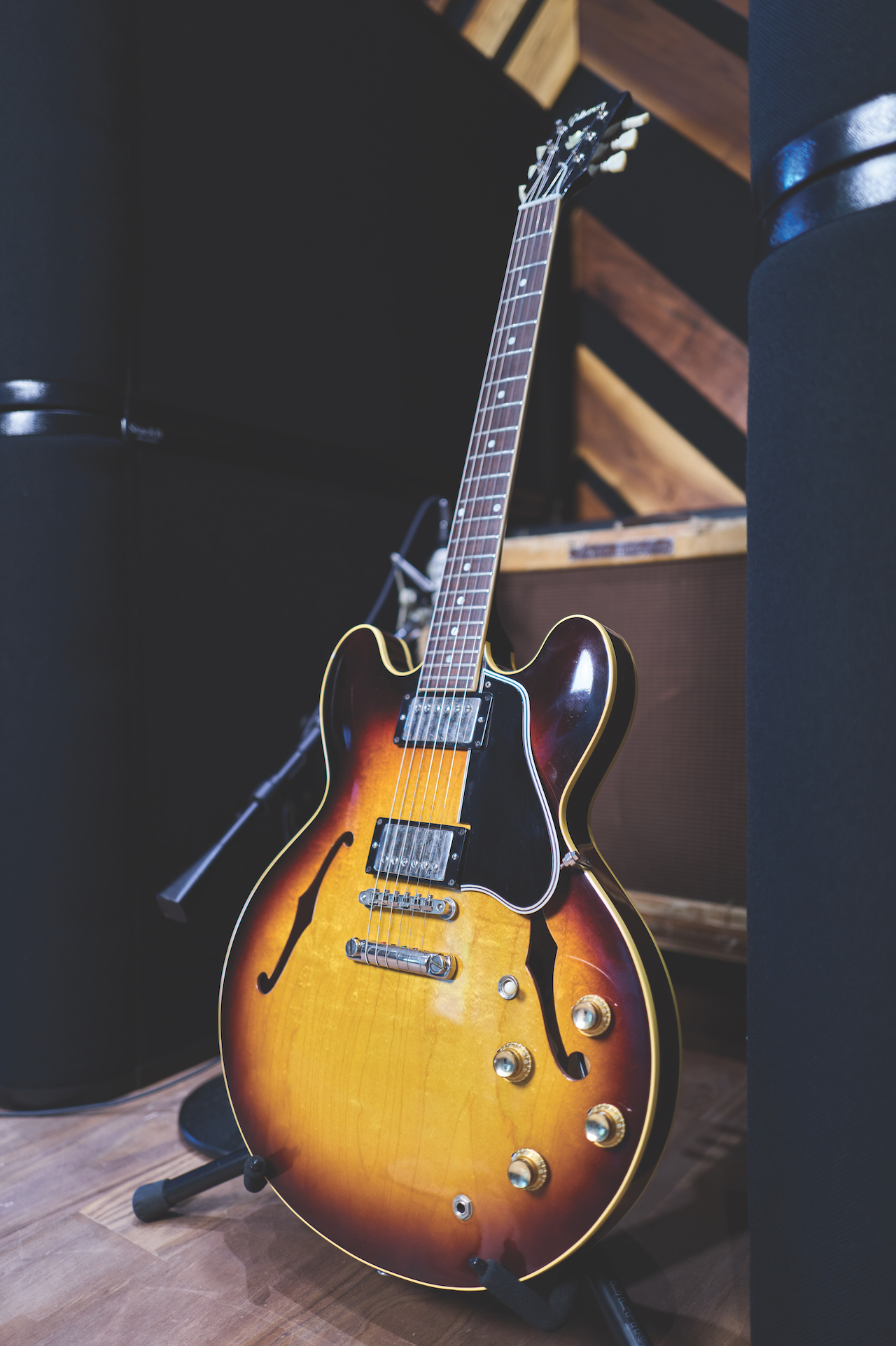
Kravitz was inspired to purchase this ES-335 out of his love for guitarist Al McKay, who played a 1972 335. “I’m a big Earth, Wind & Fire fan,” Kravitz explains, “and Al McKay is one of my favorite guitar players, because his rhythm guitar playing is just incredible, and I learned so much of my rhythm from listening to him.
“I didn’t have a 335 – I had one before, but I wanted a clean one, and so I bought this when we were in Nashville on our last tour. There were two of them: one that was sort of beat-up and beautiful, and this one, which was really clean.
“I must have played them for two hours, going back and forth, trying to decide which one to buy. But there was something I liked about the tone of this one – it was just really even. I use it on Blue Electric Light on Spirit in My Heart.”
5. Gibson J-250 Brazilian (1967)
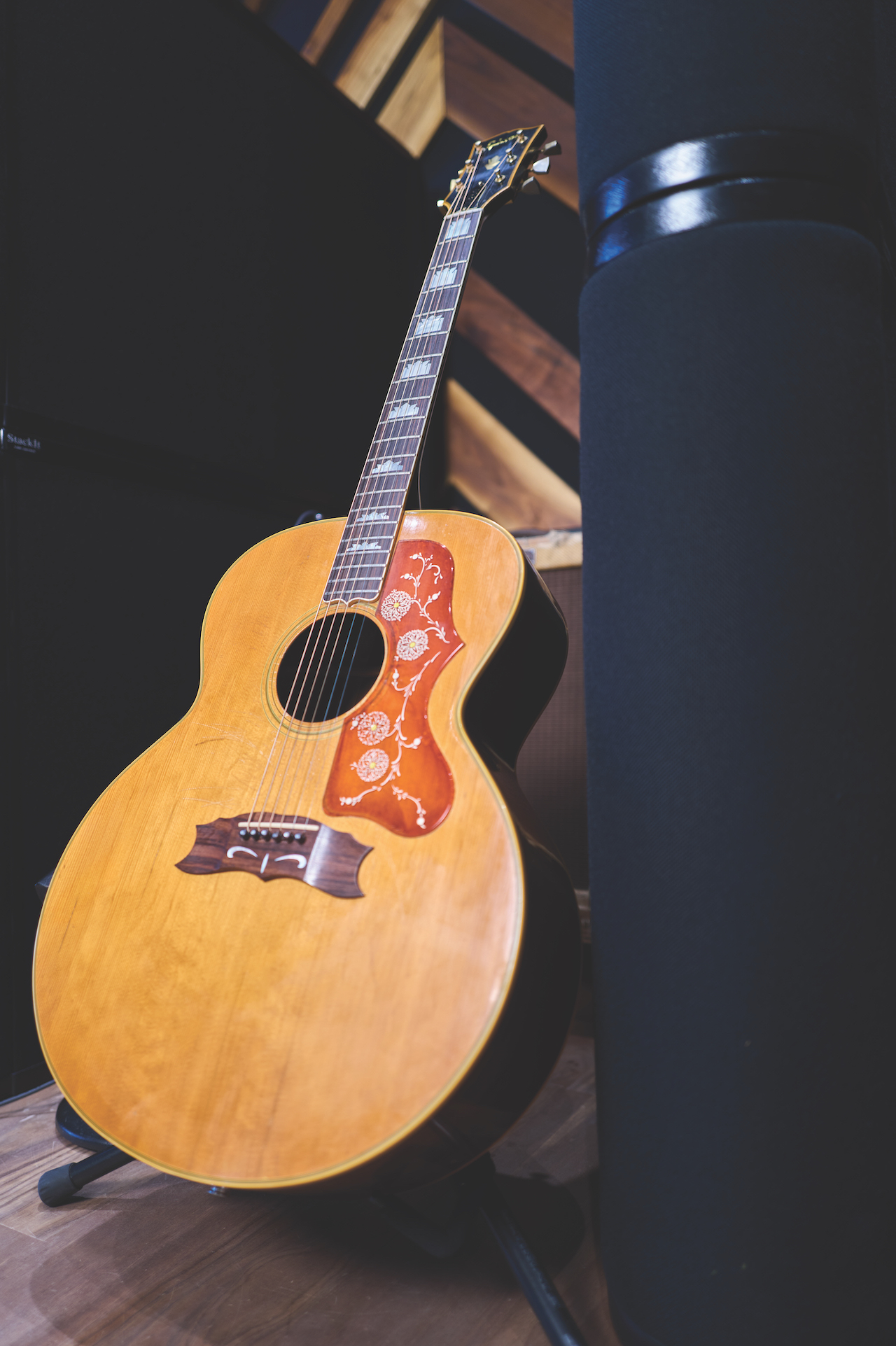
“My acoustics include this Gibson, two [Gibson] Everly Brothers guitars that I’ve been using for years and a Martin,” Kravitz says. “That’s my arsenal of studio acoustics. I’ve had this for so long, I can’t even remember where I got it. It sounds beautiful and broad, and it’s one of my main guitars that’s been on several albums.”
6. Gibson Les Paul Standard Walnut (1968)
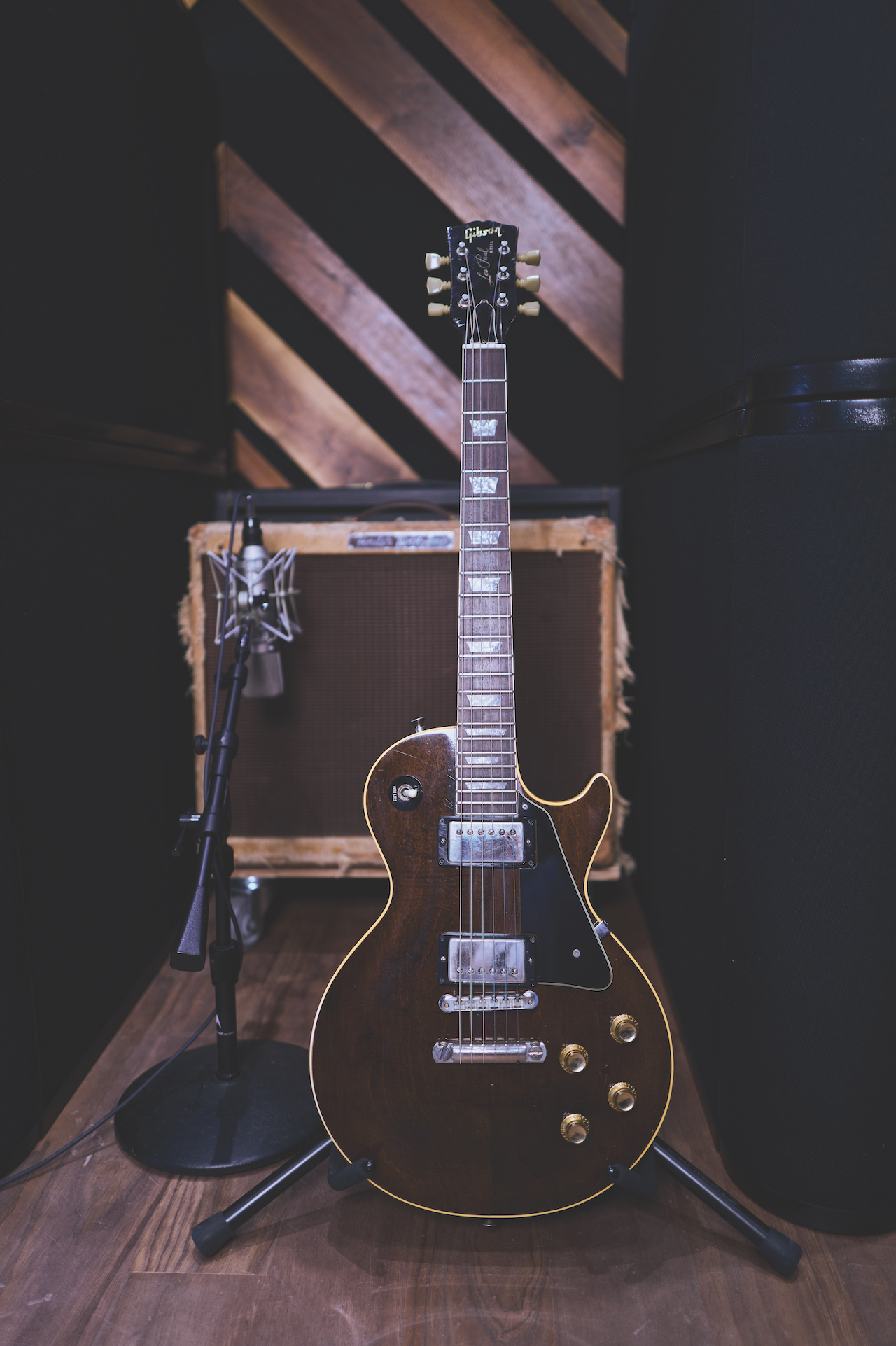
This gorgeous example was commissioned by Manny’s Music and built by Gibson from 1959 parts.
“I got it from my old friend Rudy [Pensa, of Rudy’s Music SoHo], who I’ve known since I was a kid living in New York City,” Lenny says. “Back when I was walking the streets and trying to figure out what I was going to do, I used to go into Rudy’s shop on 48th Street and he let me play the guitars.
“Of course, I didn’t have a dollar. So I’ve known Rudy that long.” To date, the guitar has not made an appearance on record, but Kravitz suggests its time is coming.
“I just love the way it looks, and it’s probably my cleanest-sounding Les Paul,” he says. “It’s hanging there on the wall, waiting for me.”
- Lenny Kravitz's Blue Electric Light can be pre-ordered now.
Mark is a freelance writer with particular expertise in the fields of ‘70s glam, punk, rockabilly and classic ‘50s rock and roll. He sings and plays guitar in his own musical project, Star Studded Sham, which has been described as sounding like the hits of T. Rex and Slade as played by Johnny Thunders. He had several indie hits with his band, Private Sector and has worked with a host of UK punk luminaries. Mark also presents themed radio shows for Generating Steam Heat. He has just completed his first novel, The Bulletproof Truth, and is currently working on the sequel.
